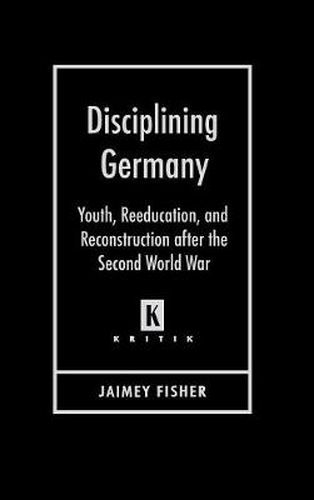Readings Newsletter
Become a Readings Member to make your shopping experience even easier.
Sign in or sign up for free!
You’re not far away from qualifying for FREE standard shipping within Australia
You’ve qualified for FREE standard shipping within Australia
The cart is loading…






This title is printed to order. This book may have been self-published. If so, we cannot guarantee the quality of the content. In the main most books will have gone through the editing process however some may not. We therefore suggest that you be aware of this before ordering this book. If in doubt check either the author or publisher’s details as we are unable to accept any returns unless they are faulty. Please contact us if you have any questions.
During Hitler’s reign, the Nazis deliberately developed and exploited a youthful image and used youth to define their political and social hierarchies. After the war, with Hitler gone but still requiring cultural exorcism, many intellectuals, authors, and filmmakers turned to these images of youth to navigate and negotiate the most difficult questions of Germany’s recent, nefarious past. Focusing on youth, education, and crime allowed postwar Germans to claim one last realm of sovereignty against the Allies’ own emphatic project of reeducation. Youth, reeducation, and reconstruction became important sites for the occupied to confront not only the recent past, but to negotiate the present occupation and, ultimately, direct the future of the German nation. Disciplining Germany analyzes a variety of media, including literature, news media, intellectual history, and films, in order to argue that youth and education played a central role in Germany’s coming to terms with the Nazi past. Although there has been a recently renewed interest in Germany’s coming to terms with the past, this attention has largely ignored the role of youth and reeducation. This lacuna is particularly perplexing given that the Allies’ reeducation project became, in many ways, a cipher for the occupational project as a whole. Disciplining Germany opens up the discussion and points toward more general conclusions not only about youth and education as sites for wider socio-political and cultural debates but also about the complexities of occupation and the intertwining of different national cultures. In this investigation, the study attends to both ‘high’ and ‘low’ cultural text - to specialized versus popular texts - to examine how youth was mobilized across the generic spectrum.With these interdisciplinary approaches and timely interventions, Disciplining Germany will find a diverse readership, including upper-division and graduate courses in German studies and German history as well as those general readers interested in Nazi Germany, cultural history, film and literary studies, youth culture, American studies, and post-conflict and occupational situations.
$9.00 standard shipping within Australia
FREE standard shipping within Australia for orders over $100.00
Express & International shipping calculated at checkout
This title is printed to order. This book may have been self-published. If so, we cannot guarantee the quality of the content. In the main most books will have gone through the editing process however some may not. We therefore suggest that you be aware of this before ordering this book. If in doubt check either the author or publisher’s details as we are unable to accept any returns unless they are faulty. Please contact us if you have any questions.
During Hitler’s reign, the Nazis deliberately developed and exploited a youthful image and used youth to define their political and social hierarchies. After the war, with Hitler gone but still requiring cultural exorcism, many intellectuals, authors, and filmmakers turned to these images of youth to navigate and negotiate the most difficult questions of Germany’s recent, nefarious past. Focusing on youth, education, and crime allowed postwar Germans to claim one last realm of sovereignty against the Allies’ own emphatic project of reeducation. Youth, reeducation, and reconstruction became important sites for the occupied to confront not only the recent past, but to negotiate the present occupation and, ultimately, direct the future of the German nation. Disciplining Germany analyzes a variety of media, including literature, news media, intellectual history, and films, in order to argue that youth and education played a central role in Germany’s coming to terms with the Nazi past. Although there has been a recently renewed interest in Germany’s coming to terms with the past, this attention has largely ignored the role of youth and reeducation. This lacuna is particularly perplexing given that the Allies’ reeducation project became, in many ways, a cipher for the occupational project as a whole. Disciplining Germany opens up the discussion and points toward more general conclusions not only about youth and education as sites for wider socio-political and cultural debates but also about the complexities of occupation and the intertwining of different national cultures. In this investigation, the study attends to both ‘high’ and ‘low’ cultural text - to specialized versus popular texts - to examine how youth was mobilized across the generic spectrum.With these interdisciplinary approaches and timely interventions, Disciplining Germany will find a diverse readership, including upper-division and graduate courses in German studies and German history as well as those general readers interested in Nazi Germany, cultural history, film and literary studies, youth culture, American studies, and post-conflict and occupational situations.